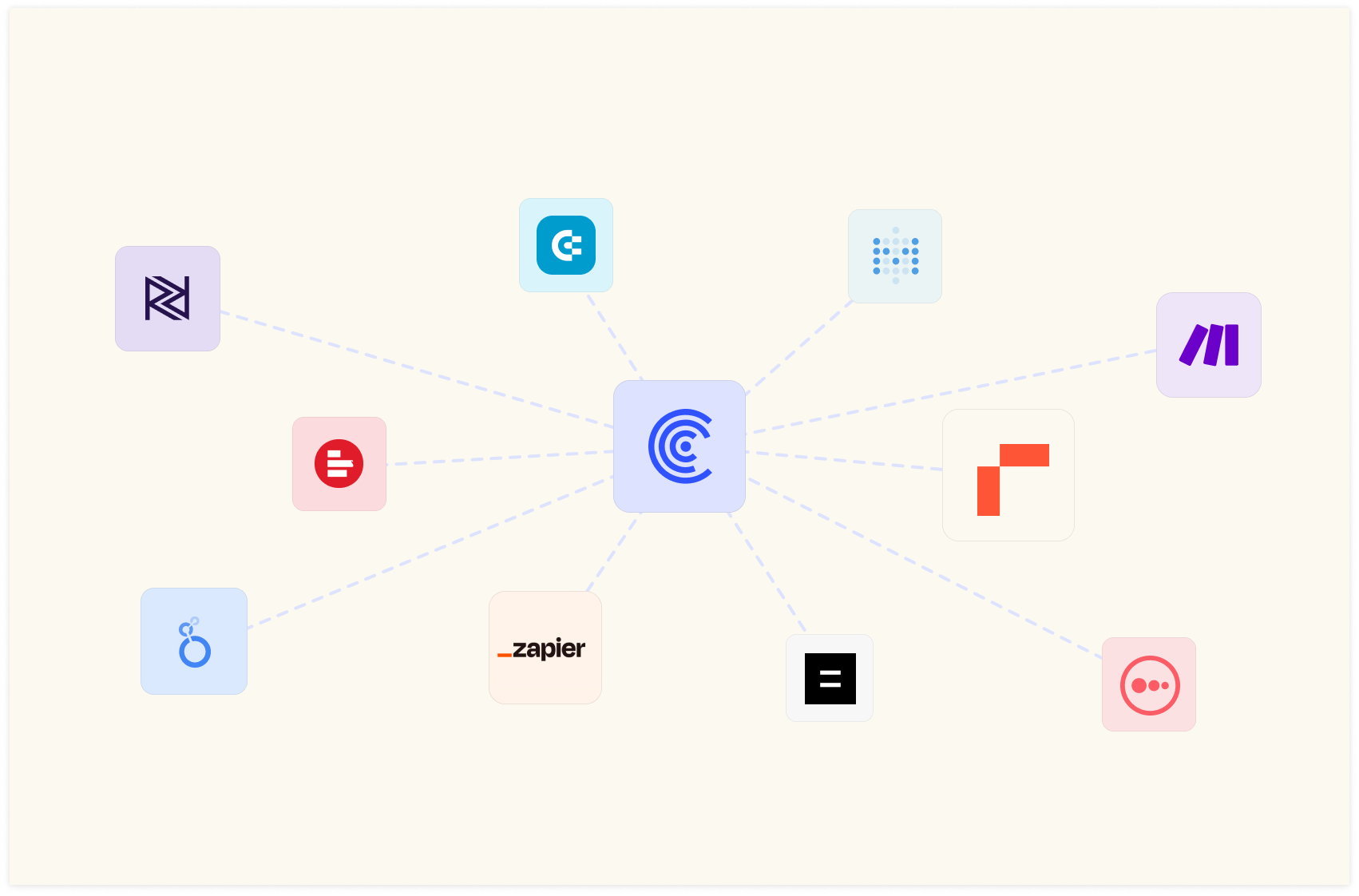Google Sheets vs Excel vs Rows: Which One is Better in 2025?

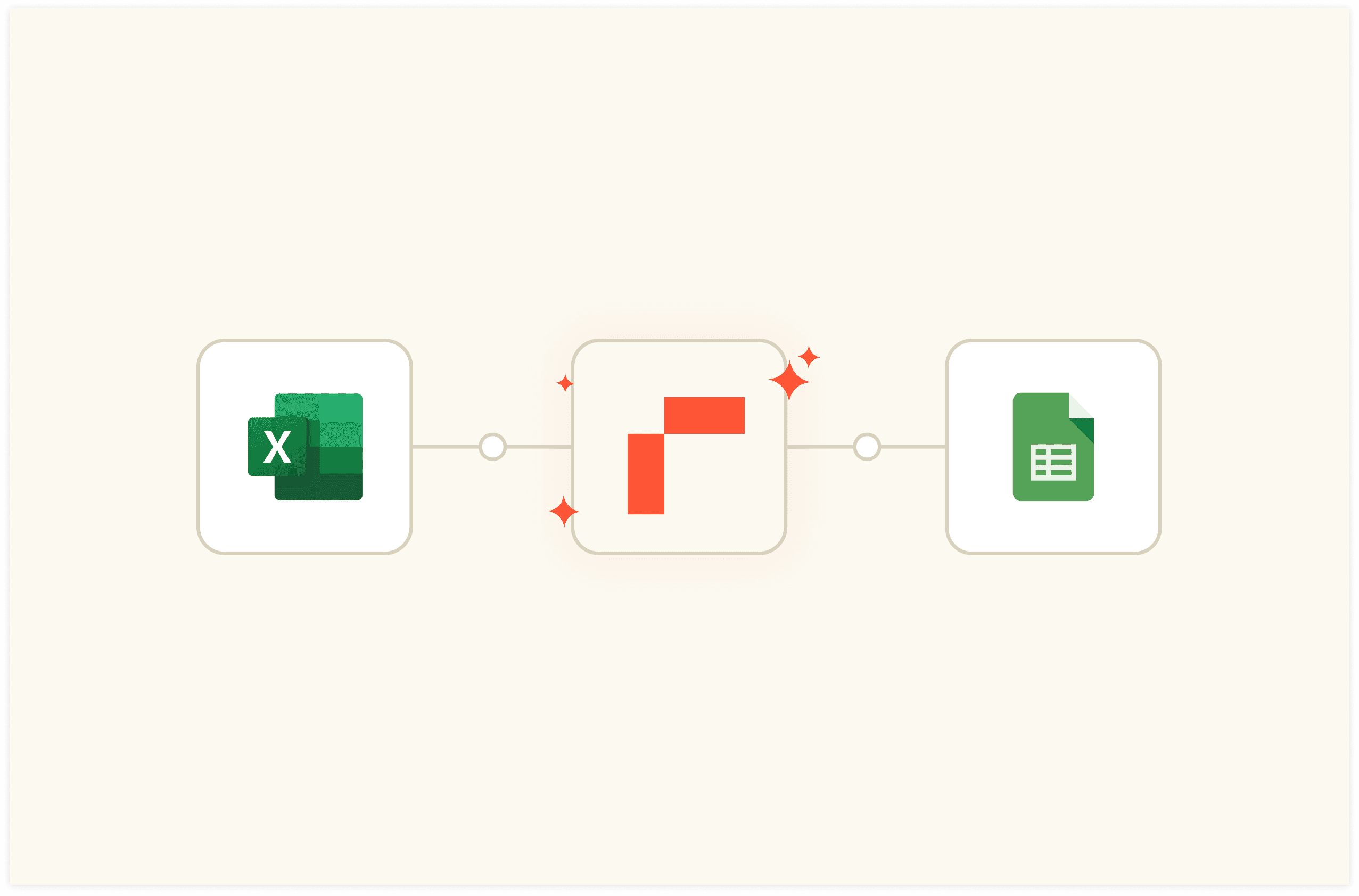
Finding the right spreadsheet software that fulfills all your needs is tough.
With uncountable options available in the market today, you can get overwhelmed and make a decision that isn’t the best for your business.
To save you time and money, I have identified the three best spreadsheet software in the market.
Google Sheets, Excel, and Rows.
In this article, I will compare Google Sheets vs Excel vs Rows based on their features, integrations, and pricing.
But first, here’s a TL;DR to save you time:
Google Sheets: If you need a spreadsheet software primarily to manipulate and transform mid or large-sized datasets and you want to collaborate seamlessly with your team on the spreadsheet, use Google Sheets.
Excel: If you need to manipulate and run in-depth analysis of large datasets, then Excel is the right choice for you. The software also gives you access to the biggest catalog of functions and formulas.
Rows: If you find yourself often pasting data or importing files from many of your daily tools to a spreadsheet to analyze and share, then your go-to software is Rows. Rows comes with 50+ data integrations, AI capabilities, and beautiful sharing options.
For an in-depth comparison, read ahead.

Your new AI Data Analyst
Extract from PDFs, import your business data, and analyze it using plain language.
Try Rows (no signup)Features: Google Sheets vs Excel vs Rows
All three spreadsheet tools offer overlapping features. However, they differ by a considerable margin. Let's start with Rows.
Rows Features
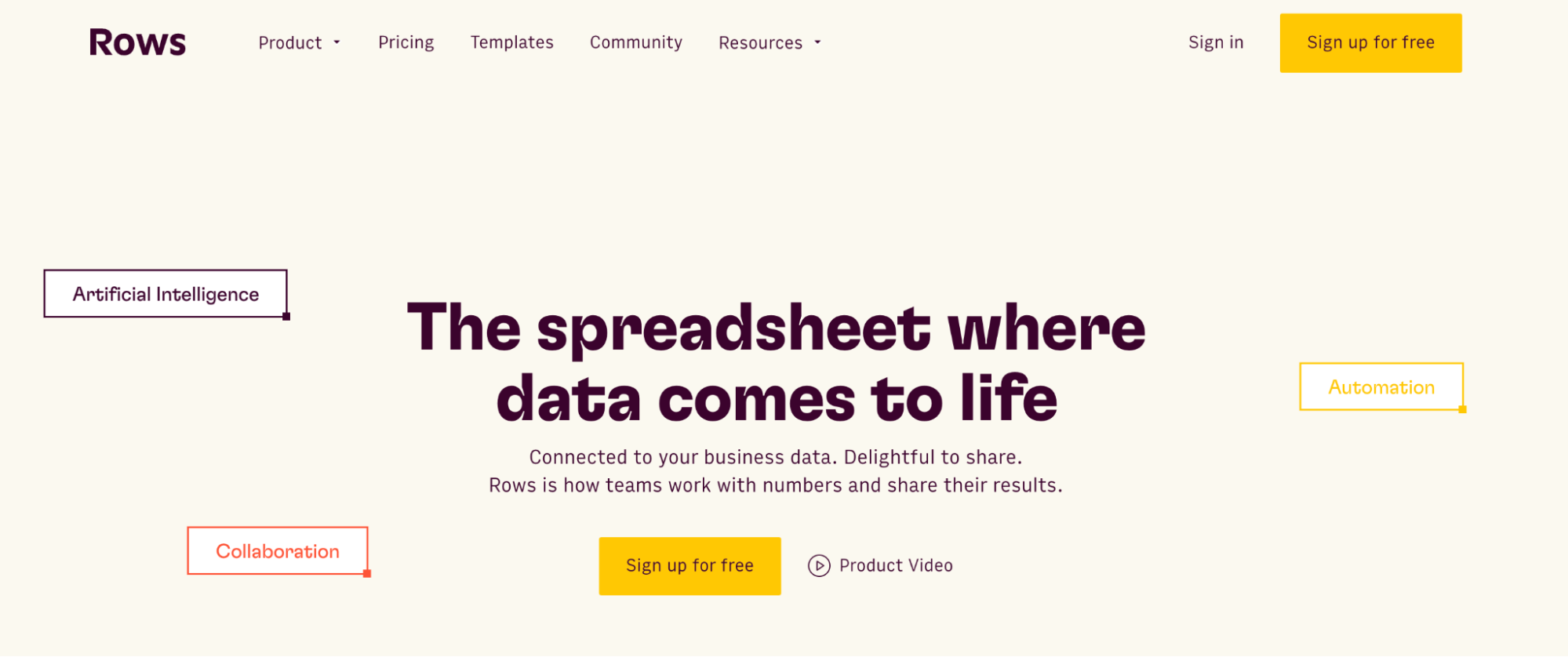
Rows is a spreadsheet software that gives you extra flexibility when it comes to importing, transforming, and visualizing data.
The platform has modern AI capabilities, access to 50+ integrations, and stunning data visualization features that make it stand out in the crowded spreadsheet market.
Let’s look at some of the features it offers:
Feature 1. Data Integration
Rows integrates with 50+ software that helps you import and export live data into or from spreadsheets.
The best part about these integrations is that all of these are built-in native features. You don’t need an external add-on to use AI in your analysis.
Curious about how Rows pulls this off?
It handles JSONs in the grid and converts them into table format.
The feature comes in handy and saves you time.
Some examples of data integration in Rows are:
Import Google Analytics 4 data to Rows and get key analytics and reporting. Pick one of the recommended reports or build your own custom view as follows:
Or you can:
Connect your LinkedIn page and track comments to your posts.
Connect Slack to Rows and set alert automation to your #social channel whenever a new comment appears on your social media posts. All from a spreadsheet.
Import a Notion database in Rows with a few clicks, enrich data, and send it back to Notion.
The HTTP source sends GET, POST, PUT, and PATCH requests to any endpoint using basic or API token authentication methods. This helps you retrieve data from tools that aren’t in the Rows catalog.
💡Try it yourself real time with the following HTTP tester:
Feature 2. Inbuilt AI to Solve Complex Problems
Rows has inbuilt AI capabilities that makes data analysis easy even for non-data-friendly users. The software lets you explain what you want to calculate in plain, simple English rather than formulas.
There are three main AI components you get to use with Rows:
1. AI Functions
Rows comes with 14 proprietary AI functions that automate prompts and address specific types of tasks.
One such function is – EXTRACT_OPENAI, which helps you extract a concept or a portion from any text. Watch the interactive demo below:
Similarly, you can also execute sentiment analysis on a social media comment or product review using the function – SENTIMENT_ANALYSIS_OPENAI or clean up data using APPLY_TASK_OPENAI.
💡Try it yourself in real-time with our Sentiment Analysis tool
Discover more about all possible use cases of AI in Rows.
2. AI Analyst
With the AI Analyst, you can ask AI to analyze, summarize, transform, and enrich your analysis. Click on the "AI Analyst“ ✨ icon, at the top right corner of any table.
A chat interface will open on the right: you can ask a broad range of questions, from basic spreadsheet commands - plotting a chart or adding or formatting columns - to more complex tasks, such as slicing, pivoting, or computing metrics about your data.
For example, given a dataset with daily revenue and costs of various marketing campaigns, you can ask the Analyst to add a column with the profit margin. Watch the video below:
In addition, our AI Analyst is instructed to use our native OpenAI functions to perform data enrichment or extraction tasks.
For example, you can ask the AI analyst to run a sentiment analysis on a column with product reviews, or add a column that categorizes addresses into regions, see below:
Want to know more about how our Analyst works? Check out our guide or watch our demo.
3. AI Subtitles
Ask AI to generate subtitles for your tables and graphs that include key insights from the data displayed.
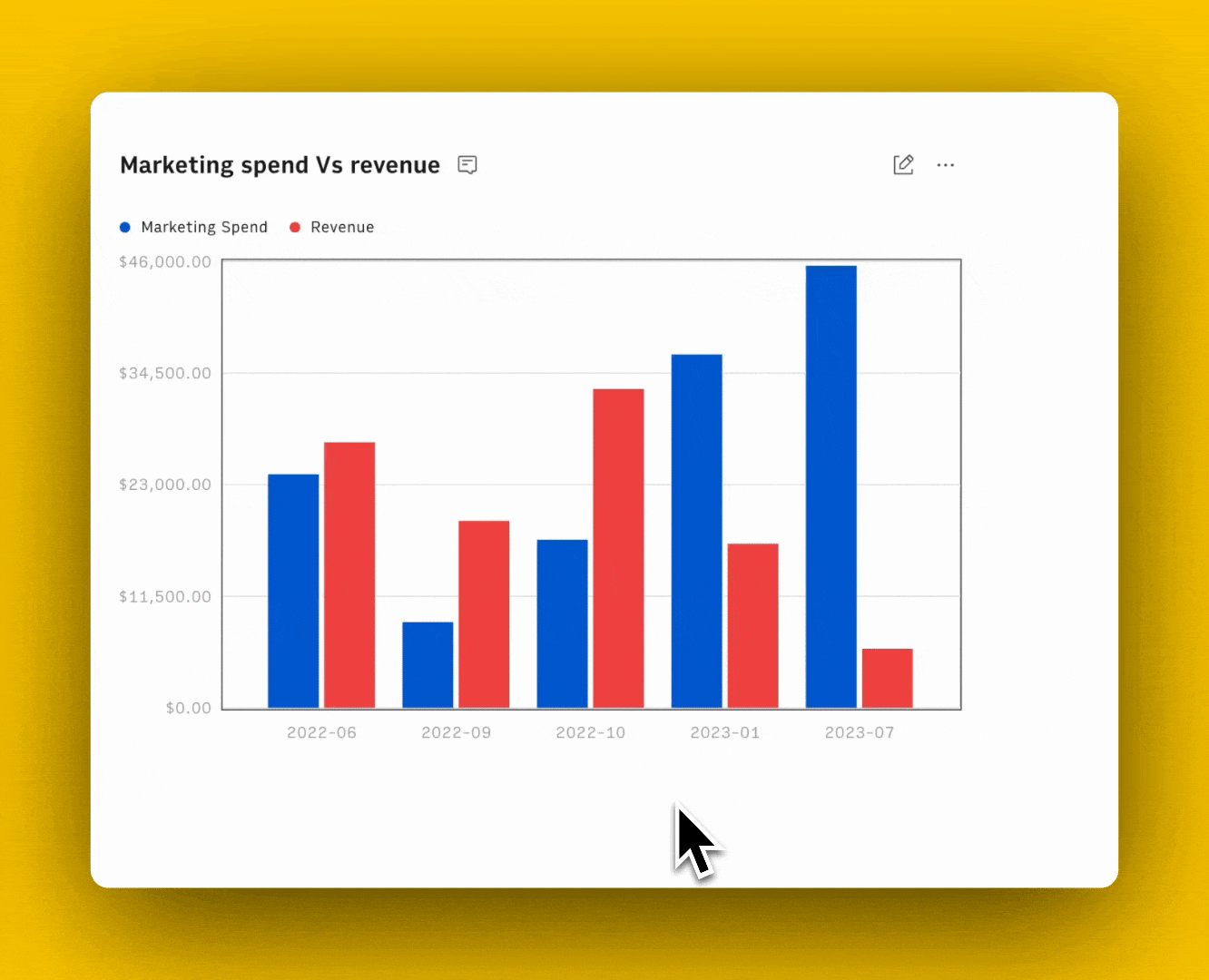
Feature 3. Embed Tidy Tables and Charts
Rows layout lets you create dashboards that bridge the gap with modern data visualization tools but with the ease and flexibility of a spreadsheet.
The example below shows the template of our KPIs dashboard that we are currently using with Rows investors (but with dummy data):
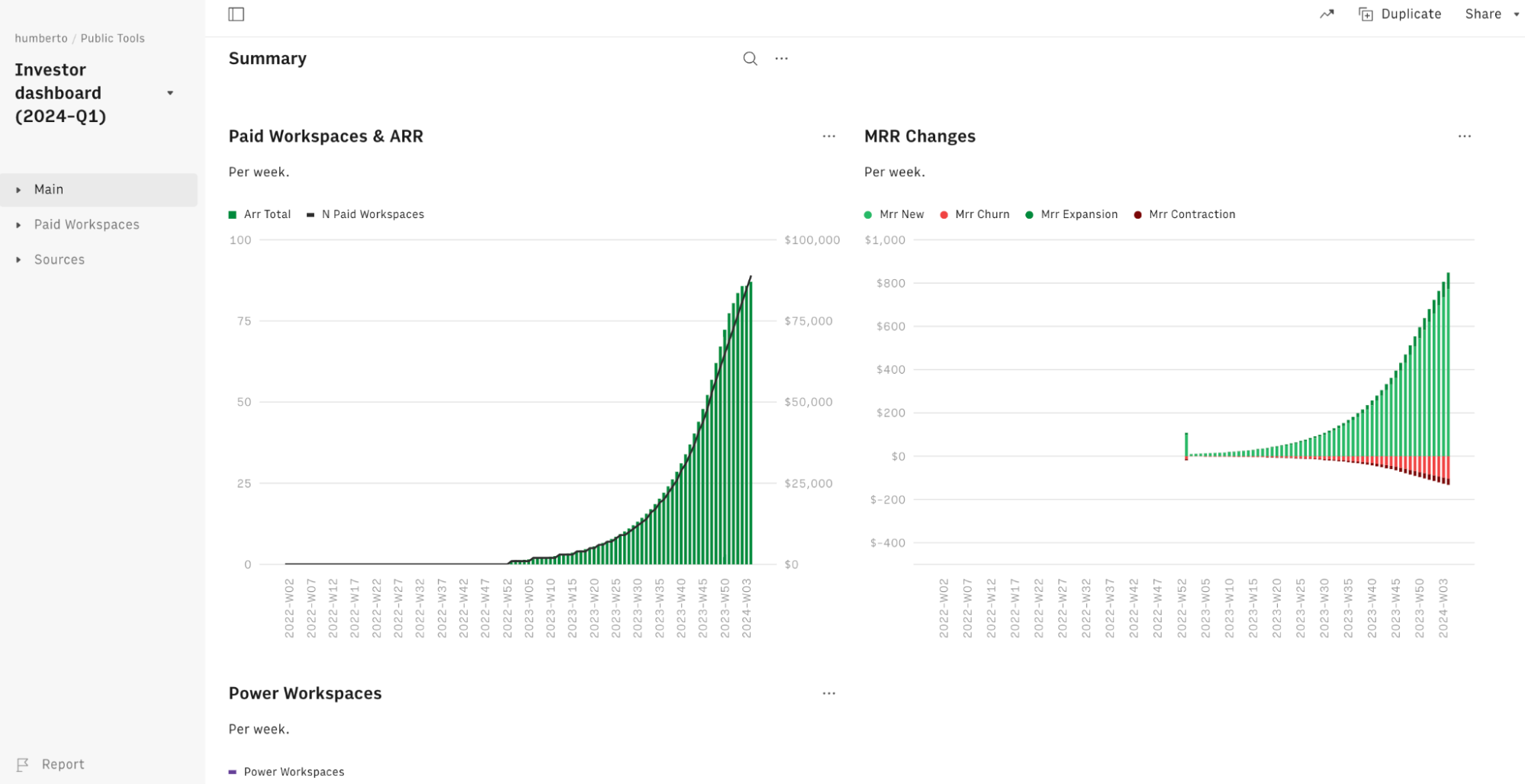
Apart from this, you can also embed tables and charts beautifully on Notion, Confluence, website, wiki, or other internal tools that support iframes with ease.
It’s a simple 4 step process:
Choose Embed from the Settings menu that you see on the right-hand corner of the element you want to embed.
Switch the Share Privately toggle on.
Click <> Copy code. Use the Copy link to paste directly into tools that automatically embed via the link - e.g., Notion.
Paste the embed code on your website, wiki, or destination tool.
Here’s an interactive demo to understand better:
Learn how to use Embed in the most recent documentation tools, like Notion, Confluence, and Slite.

Your new AI Data Analyst
Extract from PDFs, import your business data, and analyze it using plain language.
Try Rows (no signup)Google Sheets Features

Google Sheets is the most minimalistic spreadsheet app in its category. Let's drill down into Google Sheets features.
Formulas and Functions
Google Sheets has an extensive catalog of formulas and functions.
The software stands out with unique functions, such as QUERY, which lets you query data using SQL-like commands. It also lets you create custom functions with built-in Sheets formulas that are reusable across sheets.

AI and Automation
Google Sheets AI features are limited to automation tools for data validation, removing duplicates, and trimming white spaces. It also has an Autocomplete function that auto-fills cells and provides suggestions on data cleanup, formulas, and Pivot tables.
Google recently introduced Gemini as an AI sidekick for Google Workspace apps (including Google Sheets). However, it's still in the early access phase and has not been completely rolled out to the public.
To use Gemini for Sheets, you must have an existing Workspace plan (paid). This requirement does not apply to Rows, which features built-in AI and does not depend on third-party tools or require payment for integrating AI into spreadsheets.
For now, Google Sheets lets you record Macros to automate spreadsheet processes. Once recorded, you can activate a macro to repeat those actions later.
Compared to Rows and Excel AI, Google Sheets falls short in AI functions.
Real-Time Collaboration
Google Sheets excels at real-time collaboration. Sheets allow multiple teammates to edit the same spreadsheet simultaneously, showing one another's cell selections and edits in real-time.
It also has a chat feature that makes it easy for teammates to communicate in real-time.
But the user experience isn’t as good as Rows. When many people work on Google Sheets together, it slows down and might lead to software crashes.

What’s more, Sheets keeps version history, supports in-cell comments, and allows spreadsheet sharing via smart links with role-based access permissions.

Data Visualizations
Google Sheets is an excellent choice if you've got a smaller dataset to analyze and visualize. It offers an extensive gallery of data visualization elements, such as bars, charts, graphs, tree maps, histograms, and more.
It has an intuitive chart editor that lets you customize charts for colors, layouts, and several other customization options.
Excel Features
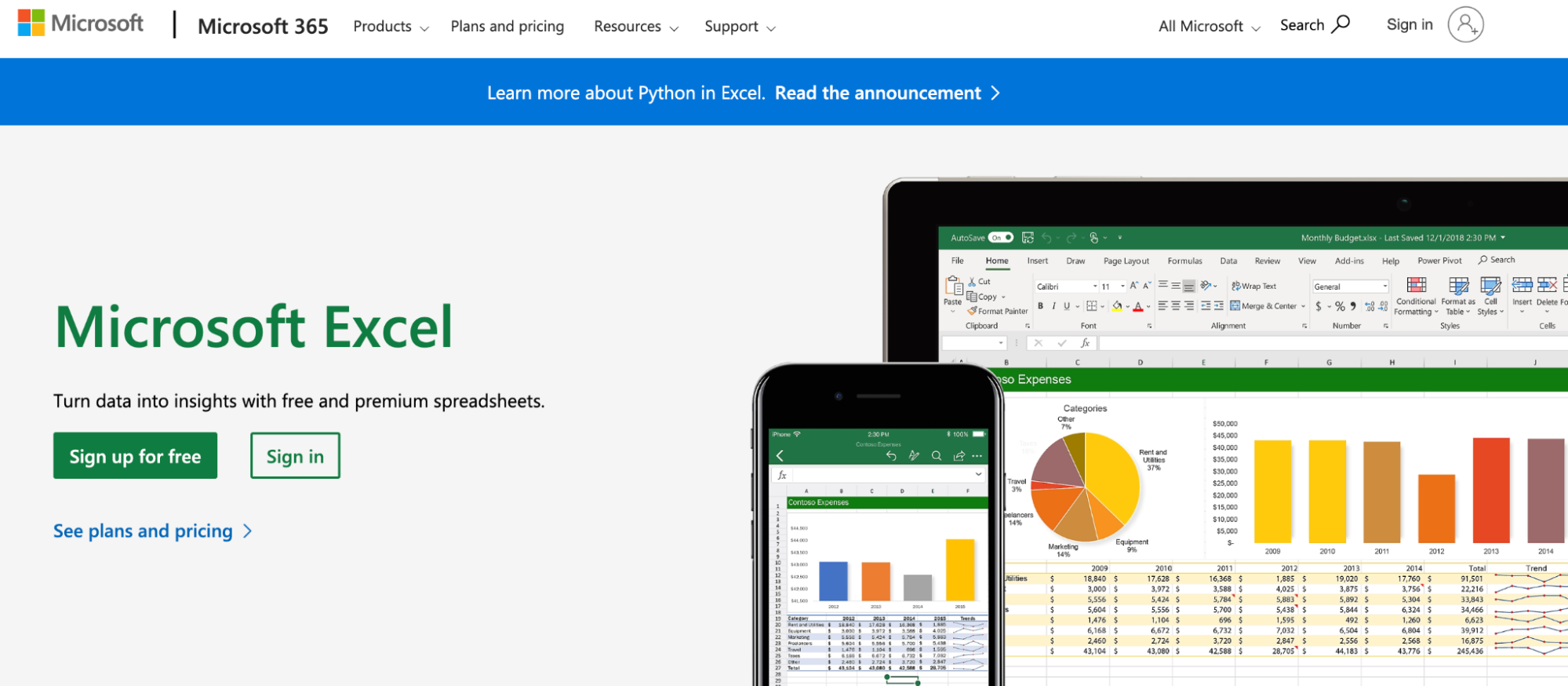
Excel has pioneered spreadsheet reporting for ages. With every upgrade, it gets better and now poses as a decent competitor to Rows and Google Sheets.
Let's take a look at its features.
Formulas and Functions
In Google Sheets vs Excel vs Rows, Excel has the largest catalog of formulas and functions (500+). This makes tasks like accounting and statistical analysis easy to perform in Excel. Much of the reason why Excel is still holding its ground in the spreadsheet industry.
Conversational AI
Excel has an AI Copilot, a conversational AI assistant that lets you perform most tasks via natural language commands.
Copilot in Excel helps you with low-level tasks like formatting and organizing data to high-end analysis, such as identifying trends, proposing what-if scenarios, suggesting ideas for improving your business, and building a dashboard.
However, unlike Rows, which provides AI capabilities with no added cost, Copilot is an add-on that costs an extra to use within Excel.
Advanced Data Analysis
Other than Copilot AI, Excel lets you auto-fill cells, update cell values, and apply automatic formatting to ease data analysis.
Like Google Sheets, functions like creating a macro in Excel allow you to customize automation and speed up data entry.
While Excel has far more data-holding capacity than Google Sheets without slowing down, users have also found that Excel's advanced features go beyond what Google Sheets and Rows offer in terms of functionality.
Advanced statistical tests such as z-tests, t-tests, and ANOVAs are built into the platform.
Meanwhile, to perform an ANOVA test in Google Sheets, you must first download the XLMiner Analysis Toolpak.
It's no wonder Excel is the preferred choice for analyzing large datasets that require complex formulas, functions, and processes.
Data Visualizations
Excel offers customizable graphics and data visualization elements like pie, line, column, bar charts, area and scatter graphs, and other templated options.
It also has a Quick Analysis tool that automatically selects the best chart for your data. Other than that, you've access to a vast gallery of ready-made dashboard and report templates for inventory, budgeting, and versatile purposes.
Which Spreadsheet Tool Has Better Features?
All three tools are winners in different aspects:
If you want advanced AI capabilities and flawless data visualization, Rows is a perfect match.
If you want a large array of formulas and functions, Excel should be your choice.
Google Sheets is a great tool if you want good data formatting features and a large set of functions and formulas.
Integrations - Google Sheets vs Excel vs Rows
Rows Integration
Rows integrates with more than 50 data sources that help you import , automate, and visualize data in a better way.
It integrates with software in categories like finance, marketing, databases, AI, CRMs, and more, such as Google Analytics, Google Search Console, Facebook Ads, Notion and BigQuery.
Rows also integrates with Open AI to use AI when analyzing data, making the whole process easy for the users.
Other major integrations involve software like:
Make
Gmail
HubSpot
Looker Studio
Zapier etc.
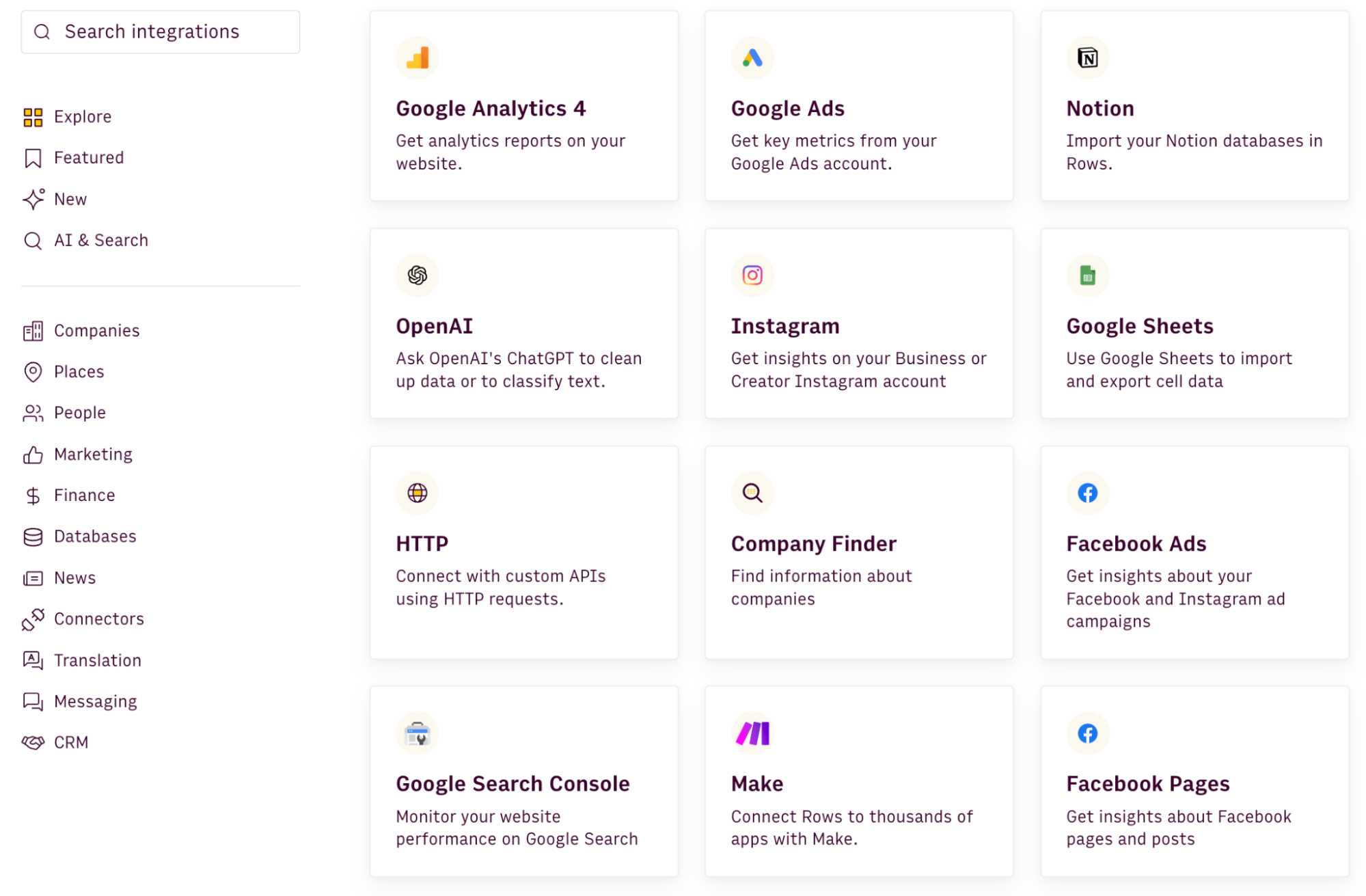
It's worth noticing that, if the tool you are using is not in Rows catalog, you can always execute custom API requests to any endpoint with proprietary HTTP functions.
Google Sheets Integration
Google Sheets integrates with other Google Cloud Services. Its integration with Google Forms is a big plus for those collecting data through forms. It also has native data connectors to export/import data from tools like BigQuery and Looker Studio.

To extend integration capabilities, you can choose add-ons from Google Workspace Marketplace. The marketplace offers free and paid add-ons that integrate Google Sheets with tools like Asana, Salesforce, ChatGPT, Jira, Contour, etc.

Excel Integration
Excel misses modern, plug-and-play data integrations. Most of which you'd find in Google Sheets and Rows.
However, Excel offers Zapier integration, allowing you to integrate with 5,000+ apps in a click.
The only native integrations Excel has are for Power BI and a few data warehouses.

Which Spreadsheet Tool Has Better Integration?
Rows undoubtedly has better integrations with data sources, marketing, finance, and other tools when compared to Google Sheets and Excel.
Pricing - Google Sheets vs Excel vs Rows
Rows Pricing
Rows comes with a free forever plan that lets you:
Onboard unlimited team members
Add up to 10 guests
Create unlimited spreadsheets
Execute 50 integration tasks per month
The free plan is quite generous. But if you want to use data integrations at scale, want white-labeled embed, video support, and more, you have the option to upgrade to one of the paid plans Rows offers:
Plus: $15/month/member, up to 25 guests, unlimited integration tasks & daily data refresh.
Pro: $22/month/member, up to 100 guests, unlimited integration tasks & hourly data refresh.
Enterprise: Custom price for advanced API usage and workflows.
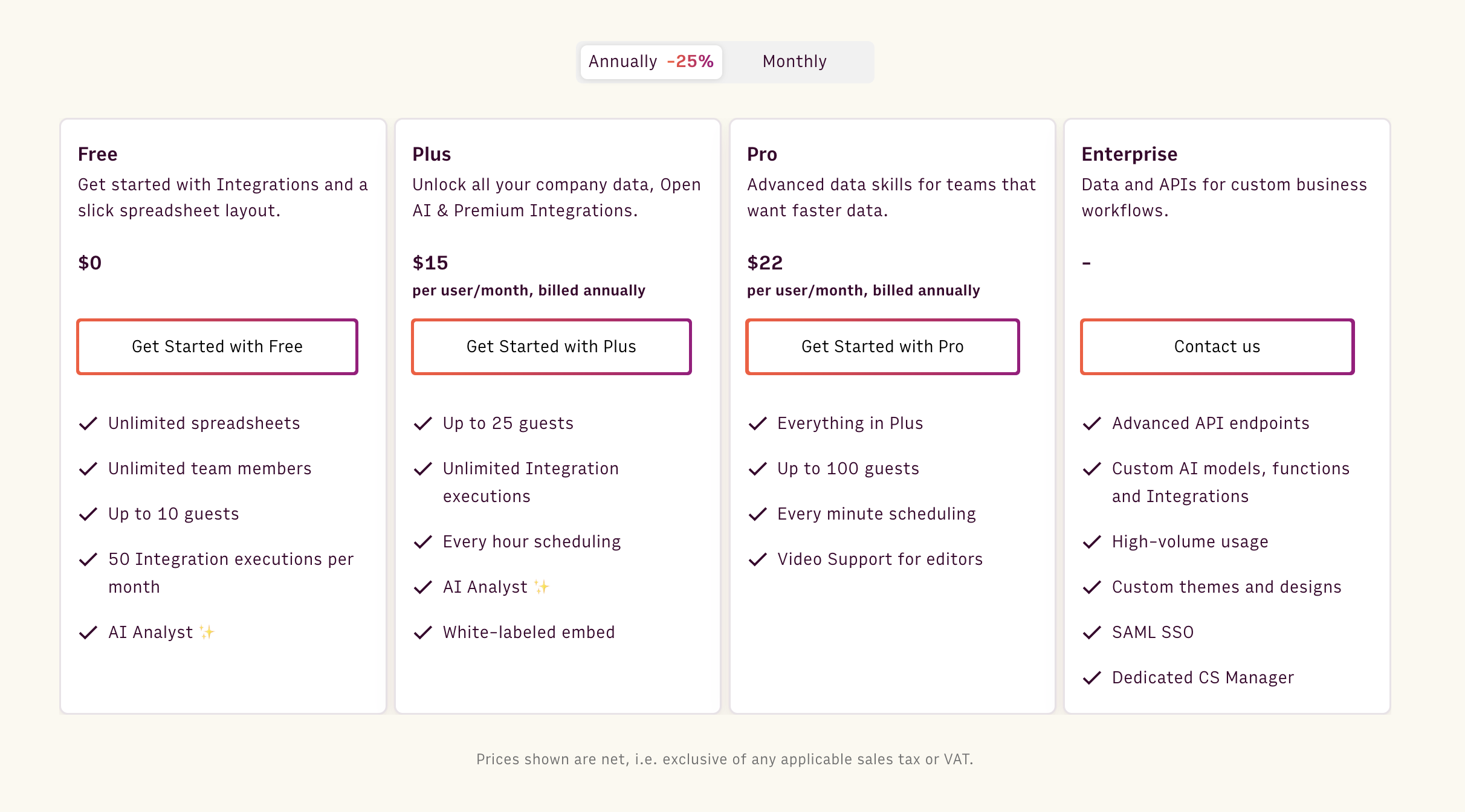
Google Sheets Pricing
Google Sheets is free for individual use. However, for businesses, Google Sheets is available as part of Google Workspace.
Here are its four annual plans billed annually:
Business Starter: $6 per user per month
Business Standard: $12 per user per month
Business Plus: $18 per user per month
Enterprise: Custom pricing

👀 Note: Gemini is available as an add-on to your Google Workspace plan.
Excel Pricing
Microsoft Excel (web-only) is available as a standalone app and is free for personal use.
The offline version comes as part of the Microsoft 365 suite and has two subscription categories for personal and professional use:
For Home
Personal: $6.99 per month
Family: $9.99 per month
For Business
Basic: $6 per user per month
Standard: $12.50 per user per month
Premium: $22 per user per month
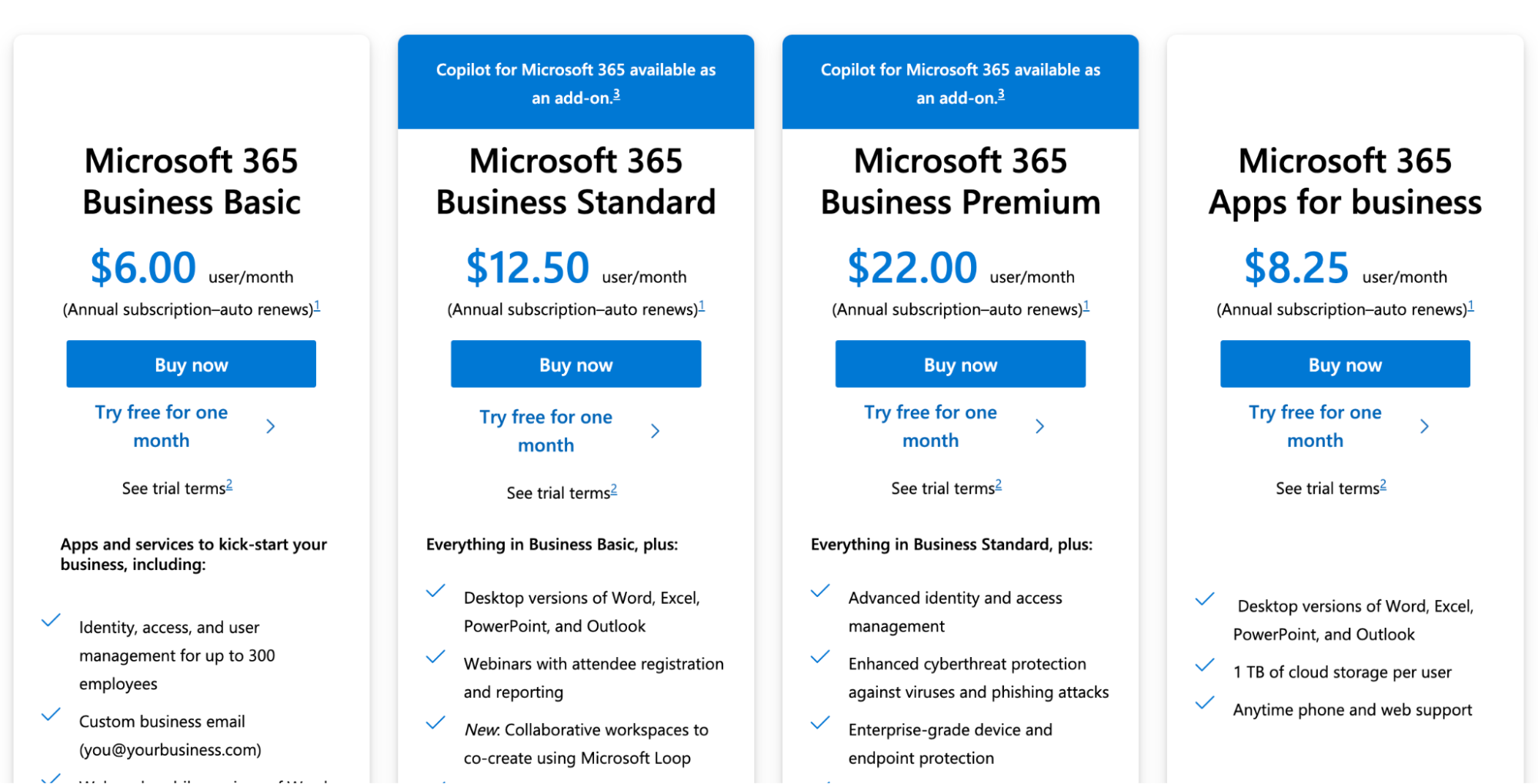
👀Note: Copilot AI is available as an add-on.
What are Customers saying?
Here’s what users of Rows, Google Sheets, and Excel are saying about these spreadsheet software on review sites.
Rows Reviews
The knowledge base Rows offers for every feature and integration is commendable and users love it.
“Excellent job, before beginning to use the Rows, I really love short introduction videos as a taste of getting started tutorial. And also asking the user's level of understanding about spreadsheets was a plus. It is easy to use and easy to share. Good visual design!” - Product Hunt.

Users are happy with the variety of features Rows offers and its AI capabilities.
“I've been using Rows for several years now and I can honestly say it's the best way to work with spreadsheets. 📊 So I'm excited to see the new 2.0 version launch on PH today! 🔥There are so many new features to explore, from the API to the chart embeds, and the GPT-3 integration is just mind-blowing.” - Product Hunt.

A large number of integrations makes it easy for users to import and export data.
“The most innovative customer centric tool currently available. As a spreadsheet lover, Rows is incredible. The amount of integrations you get out of the tin is just amazing. And now with OpenAI!
I would support Rows just because of the product but the reality is that what I love more about the product is the passion behind it. Torben and Henrique (and the rest of the team) are extremely passionate about their users, constantly meeting them, requesting feedback and actioning it. Whilst that is how businesses should operate, close to their clients in order to improve their products, we all well know that it is now the case very often.” - Product Hunt.
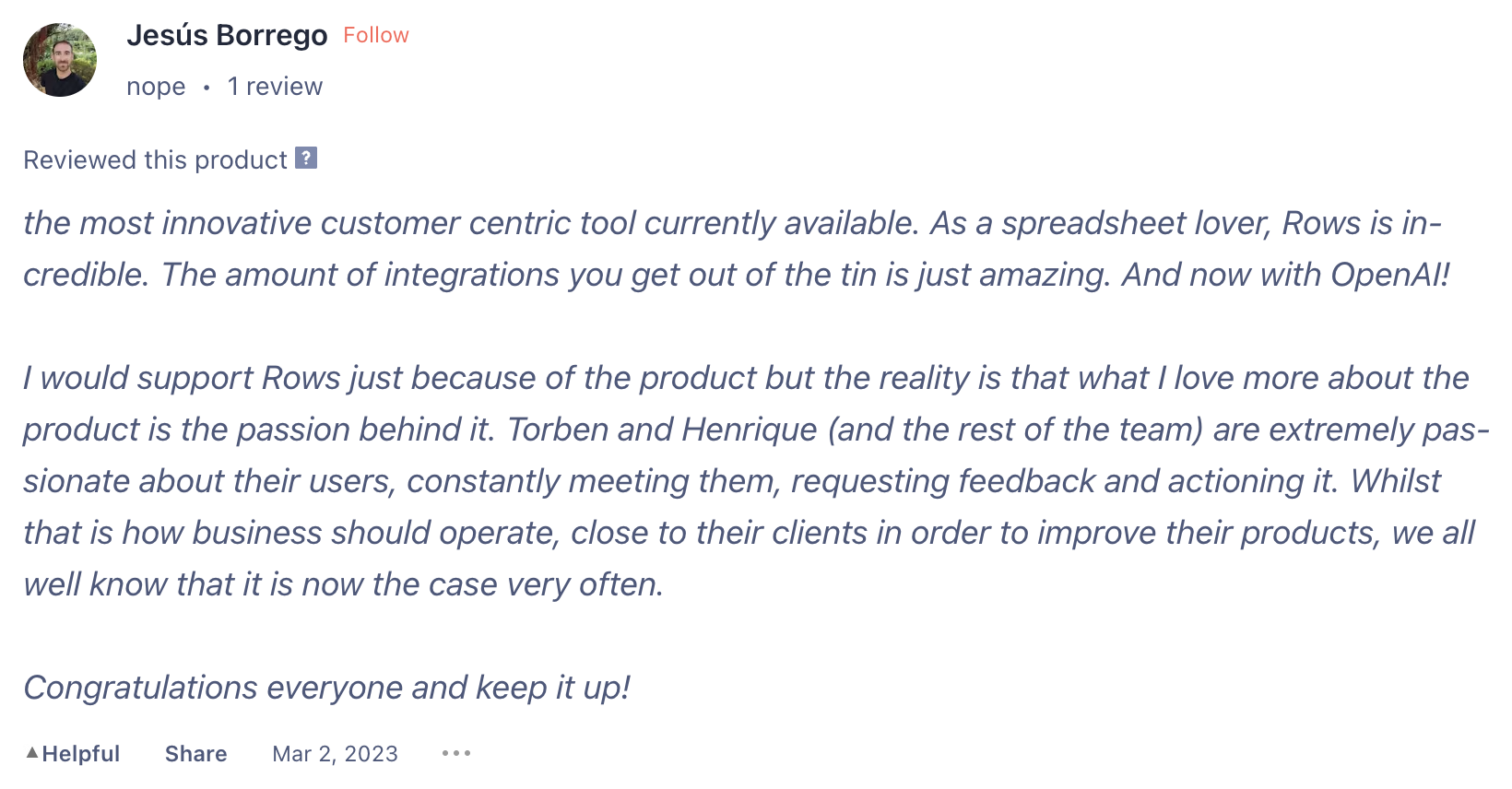

Your new AI Data Analyst
Extract from PDFs, import your business data, and analyze it using plain language.
Try Rows (no signup)Google Sheets Reviews
According to the reviewer, editing and collaborating on Sheets is way smoother than Excel. It's real-time, and the mobile app is highly responsive to perform actions on the go. However, Google Sheets misses Excel's robustness and advanced data handling capabilities.

Another user, who is using Google Sheets for work, commends Sheets for its real-time collaboration and ease of use. Meanwhile, when working with large datasets and multiple collaborators, Sheets showed some severe slowdowns.

Excel Reviews
Based on this user review and similar ones, I realized Excel isn't great at handling large datasets. Of course, it's better than Sheets and Rows in this case, but it does take longer processing time.

Another user review was about how Excel, being a paid tool, lacks compatibility compared to Google Sheets and Rows. While the latter two are free to use and still more accessible than Excel.

Wrapping Up
I believe that with this detailed comparison, you’ll be able to choose a spreadsheet software that would suit your business needs the best.
Here’s a quick recap:
Rows’ AI capabilities, integrations, and unique features makes it one of the best spreadsheet software in the market. It can help you:
Make data analysis easier by leveraging AI, even for non-data-friendly users.
Build charts, graphs, and more elements that help you with data visualization.
Integrate with data warehouses, finance, marketing, and many more apps to import and export data.
Google Sheets is a great free spreadsheet software for individuals looking to analyze mid or large-sized datasets.
Microsoft Excel is a good spreadsheet software for companies dealing with large datasets and complex calculations.
If you or your team don’t have the time to try all three spreadsheet tools, go to Rows.com, import data, automate your report, and see if it's the right match!
Related Reading

